 JAZZ
JAZZ
at NJPAC DIANA KRALL

02 APRIL 2022 JERSEY JAZZ NJJS.ORG IN THIS ISSUE ARTICLES/REVIEWS 08 April Jazz Social: Lucy Yeghiazaryn 09 Jazz on a Sunday Afternoon: Danny Jonokuchi 11 Jazz History: Charles Mingus’ Centennial 19 Jazz History: Celebrating Carmen McRae 20 Jazz at NJPAC: Diana Krall 24 Talking Jazz: Frank Tate 31 Rising Star: Anthony Hervey 35 Sarasota Jazz Festival 39 Other Views 43 Big Band in the Sky COLUMNS 03 All That’s Jazz 05 Editor’s Choice 38 Dan’s Den 45 Not Without You
ON THE COVER Diana Krall. Photo by Mary McCartney
ALL THAT’S JAZZ
BY CYDNEY HALPIN
April is Jazz Appreciation Month (JAM). Originally intended as a catalyst to encourage people of all ages to actively participate in jazz, JAM heralds and celebrates the extraordinary heritage and history of jazz. I encourage you to celebrate and do something “jazz-centric” this month by attending a virtual or live concert event or lecture, reading a book devoted to a jazz great; purchasing a CD or LP, Googling an artist or song you’re interested in finding out more about … the possibilities and opportunities are endless.
However you chose to celebrate, actively take part in the preservation and promotion of jazz and share your interest and enthusiasm of America’s great art form with someone else - perhaps introducing them to jazz for the first time.
“Jazz music is America’s past and

it’s potential, summed up and sanctified and accessible to anybody who learns to listen” —Wynton Marsalis
T he 2021 Annual Appeal Campaign “Keeping the Music Swinging … Together” has come to a close and the board and I are humbled by and grateful for the generosity of our members and supportive non-members.
We set a goal to raise $20,000 and I’m delighted to report that at deadline for publication, we’ve raised $19,490. It ‘takes a village’ and we can’t thank all of our donors enough for your gifts and patronage.
If anyone would still like to donate and help us actually reach our $20,000 goal, you may do so anytime online at njjs.org. There’s a red “Make a Donation” button conveniently located on our home page for easy giving. We process our pay-
ments through PayPal but you do NOT need a PayPal account. Once inside our site, click on the yellow donate button and you can make a donation with your debit or credit card of choice. You can also donate by mail to: NJJS, 382 Springfield Ave., Suite 217, Summit, NJ 07901. Please make check payable to NJJS.
This is our most successful appeal campaign to date. We certainly can’t what we do without you!
It’s my honor to announce that for the sixth consecutive year, the New Jersey Jazz Society has been awarded a grant from Morris Arts to help fund in part our Jazz Socials. We’re proud to be one of 28 arts organizations helped by this funding, made possible through the Local Arts Program of the New Jersey State Council on the Arts/Department of State, a partner agency of the Na-
tional Endowment for the Arts.
This funding is a vital contribution to our annual budget. The board of directors and I are very grateful and wish to thank Morris Arts for their continued support of NJJS.
If you’d like to sponsor an NJJS Social—in part or in full, please contact me at pres@njjs.org.
Please join us on Saturday, April 23rd at 7PM as we present our Virtual Social featuring vocalist Lucy Yeghiazaryan. Lucy is a leading voice in straight ahead vocal jazz in and outside New York City.
For more information please see page 8 or visit our website njjs.org/ News. This streaming event can be viewed on our website homepage and on our New Jersey Jazz Society Facebook page and YouTube channel. I hope to “see” you there.
If you missed any of our past
03 APRIL 2022 JERSEY JAZZ NJJS.ORG
ALL
Virtual Socials or the Education Series presentations in partnership with Metuchen Arts Council/Jazz, you can easily enjoy them at your convenience on our website njjs.org/Events/Videos.
Mosaic™ Box Sets for Sale
Celebrate JAM and help fund our programming! Prized by collectors for their superior audio quality, most of these CD sets are in mint to very good condition and would make a great addition to your music collection, with proceeds helping NJJS continue to promote and present jazz. For more information on the titles for sale and prices, please visit our website njjs.org/Donate/Merchandise or contact James Pansulla - JazzEducation@njjs.org.
Along with our treasure trove
of Mosaic™ merchandise, we also have a very extensive collection of used CDs, LPs and books for sale.
Thanks to the ongoing and herculean efforts of board members
James Pansulla and Jay Dougherty, and former board member Dave Dilzell, you can find the available inventory lists on our website njjs.org/Donate/Merchandise.
With spring cleaning and summer activities just around the corner, perhaps you’ll be needing to shop on Amazon.
NJJS is part of the AmazonSmile Gives program where 0.5% of the price of your eligible purchases goes directly to NJJS - at NO additional cost to the shopper! It’s the same Amazon you know but a separate website. Same products, same service - even if you’re a Prime Member.
If you already have an Amazon
Account and shop via the app, in order to generate financial donations to NJJS, you must CHANGE your existing account Settings to “AmazonSmile” under the main menu(=). Select New Jersey Jazz Society as your charity of choice and follow the on-screen instructions to turn ON AmazonSmile. Once activated in your account, eligible purchases will generate a donation to NJJS.
If you DON’T have an existing account, you MUST SHOP on the designated website smile.amazon.com. Log on to www.smile.amazon.com and select New Jersey Jazz Society as your beneficiary, then shop as you normally would. All eligible purchases will generate a donation to NJJS.
Eligible purchases are clearly marked “Eligible for AmazonSmile donation” so you’ll know which purchases are supporting NJJS.

Please tell your friends and family members about this amazing opportunity for NJJS and thank you all in advance for your support.
This edition of Jersey Jazz is chock full of events to explore in April. NJPAC, William Paterson University, NJJS, Smooth Jazz NJ & Maplewood DAC, the Grunin Center, Long Branch Distillery, Metuchen Arts Council, New Brunswick Jazz Project, Riverview Jazz, Moore’s Lounge, Brightside Tavern, Tavern on George, Clement’s Place, DLV Lounge and the Cricket Club all have stellar events planned in honor of Jazz Appreciation Month. Read thoroughly and plan your April calendar accordingly. You don’t want to miss anything!
04 APRIL 2022 JERSEY JAZZ NJJS.ORG
THAT’S JAZZ
EDITOR’S CHOICE
BY SANFORD JOSEPHSON

Celebrating Women Jazz Pioneers at Montclair Art Museum’s Family Day
Carline Ray was an AfricanAmerican bassist who graduated from the Juilliard School of Music at the age of 16 in 1946 and then joined the Sweethearts of Rhythm, an all-female, integrated music group.
Known primarily for her bass playing, she also sang and played guitar. After the Sweethearts of Rhythm, she joined the Erskine Hawkins band and then was part of a trio that included former Juilliard classmate, Edna Smith, and former Sweetheart of Rhythm member, Pauline Braddy.
Ray, who died in July 2013 at the age of 88, was the mother of vocalist Catherine Russell, and on Sunday, April 3, Russell and trumpeter/
vocalist Bria Skonberg will perform at the Montclair Art Museum, celebrating the lives and legacy of this groundbreaking musical group. It’s the WBGO Kids Jazz portion of the Museum’s Family Day festivities.
Russell and Skonberg will have two sessions, at 1:30 p.m. and 3 p.m.
Their concerts will feature a quintet also including drummer Shirazette Tinnin, bassist Mimi Jones, and pianist Mika Nishimura. “We’ll be playing signature songs in the Sweethearts repertoire,” Skonberg said, “and encouraging participation through singing, dancing, and conversation, as the kids get to know the instruments. It’s a dream to work
with Cat and inspire the next generation by honoring the women who paved the way for my generation.”
Throughout her career, Ray was an advocate for better recognition of women in jazz, and she was featured in the documentary film, The Girls in the Band. She also appeared in bands led by Sy Oliver, Mercer Ellington, and Mary Lou Williams, and, in 2005, received the Kennedy Center’s Mary Lou Williams Women in Jazz Festival award. In 2013, she finally recorded her first solo album, Carline Ray — Vocal Sides (CD Baby), produced by her daughter, Catherine.
In his review for AllAboutJazz, C. Michael Bailey pointed out that Ray “has a musical reach that extends to the beginning of jazz. Her father played in James Reese Europe’s Society Orchestra in the early years of the 20th Century ... The pairing of Charlie Parker’s ‘Donna Lee’ and the standard
‘Back Home in Indiana” is as inspired as is Ray’s singing, attacking bebop at its core and laying waste to it ... Vocal Sides is a masterful achievement.”
When I interviewed Russell for the February 2021 issue of Jersey Jazz (“Understanding the Real Meaning of ‘The Blues’”), she said, “My mother told me how horrible it was to tour down south. The Midwest was no great thing either. Being Black and a woman, you had two strikes against you. Women weren’t treated as serious musicians, particularly women who played non-traditional instruments such as guitar, bass, and horns. ”
At a concert at William Paterson University in July 2013, five days after Ray’s death, bassist/vocalist Nicki Parrott told the audience Ray was, “one of my musical heroes.”
For more information on the performances, log onto montclairartmusem.org.
05 APRIL 2022 JERSEY JAZZ NJJS.ORG
ABOUT NJJS
Founded in 1972, The New Jersey Jazz Society has diligently maintained its mission to promote and preserve America’s great art form—jazz. To accomplish our mission, we produce a monthly magazine, Jersey Jazz ; sponsor live jazz events; and provide scholarships to New Jersey college students studying jazz. Through our outreach program Generations of Jazz, we provide interactive programs focused on the history of jazz. The Society is run by a board of directors who meet monthly to conduct Society business. NJJS membership is comprised of jazz devotees from all parts of the state, the country and the world.
MEMBER BENEFITS
10 FREE Concerts Annually at our “Sunday Socials”
Monthly Award Winning Jersey Jazz Magazine - Featuring Articles, Interviews, Reviews, Events and More.
Discounts at NJJS Sponsored Concerts & Events.
Discounts at Participating Venues & Restaurants
Support for Our Scholarship and Generations of Jazz Programs
MUSICIAN MEMBERS
FREE Listing on NJJS.org “Musicians List” with Individual Website Link
FREE Gig Advertising in our Monthly eBlast
THE RECORD BIN
JOIN NJJS
Family/Individual $45
(Family includes to 2 Adults and 2 children under 18 years of age)
Family/Individual 3-Year $115
Musician Member $45 / 3-Year $90 (one time only, renewal at standard basic membership level.)
Youth $15 - For people under 21 years of age. Date of Birth Required.
Give-A-Gift $25 - Members in good standing may purchase unlimited gift memberships.
Applies to New Memberships only.
Fan $75 - $99
Jazzer $100 - $249
Sideman $250 - $499
Bandleader $500+
Corporate Membership $1000
Visit www.njjs.org or email info@njjs.org for more information on our programs and services
A collection of CDs & LPs available at reduced prices at most NJJS concerts and events and through mail order www.njjs.org/Store
Members at Jazzer level and above and Corporate Membership receive special benefits. Please contact Membership@njjs.org for details. The New Jersey Jazz Society is qualified as a tax exempt cultural organization under section 501(c)(3) of the Internal Revenue Code, Federal ID 23-7229339. Your contribution is taxdeductible to the full extent allowed by law. For more Information or to join, visit www.njjs.org
06 APRIL 2022 JERSEY JAZZ NJJS.ORG
Magazine of the New Jersey Jazz Society
VOLUME 50 • ISSUE 04
NJJS org
Jersey Jazz (ISSN 07405928) is published monthly for members of The New Jersey Jazz Society
382 Springfield Ave., Suite 217, Summit, NJ 07901 973-229-0543 • info@njjs.org
Membership fee is $45/year.
All material in Jersey Jazz, except where another copyright holder is explicitly acknowledged, is copyright ©New Jersey Jazz Society 2020. All rights reserved. Use of this material is strictly prohibited without the written consent of the NJJS.
Editorial Staff
EDITOR
Sanford Josephson, editor@njjs.org
ART DIRECTOR
Michael Bessire, art@njjs.org
CONTRIBUTING PHOTO EDITOR
Mitchell Seidel, photo@njjs.org
CONTRIBUTING EDITORS
Bill Crow, Schaen Fox, Joe Lang, Dan Morgenstern, Jay Sweet
CONTRIBUTING PHOTOGRAPHERS
Viola Chan, Gabrielle Hervey, Don Hunstein, Carol Lo Ricco, Mary McCartney, Lynn Redmile, Elliot Ross, Diane Smithers, Anna Yatskevich
WEBMASTER
Christine Vaindirlis
Advertising
DIRECTOR OF ADVERTISING
Jane Fuller, advertising@njjs.org
ADVERTISING RATES
Full Page: $135, Half Page: $90, 1/3
Page: $60, 1/4 Page: $30
For reservations, technical information and deadlines contact advertising@njjs.org or visit njjs.org/Magazine/Advertise .
Make payment at PayPal.com: payment@ njjs.org, or via check made payable to NJJS, 382 Springfield Ave., Suite 217, Summit, NJ 07901
New Jersey Jazz Society, Officers 2021
PRESIDENT
Cydney Halpin, pres@njjs.org
EXECUTIVE VP
Jane Fuller, vicepresident@njjs.org
TREASURER
Mike Katz, treasurer@njjs.org
VP, MEMBERSHIP membership@njjs.org
VP, PUBLICITY
Sanford Josephson, sanford.josephson@gmail.com
VP, MUSIC PROGRAMMING
Mitchell Seidel, music@njjs.org
RECORDING SECRETARY
Irene Miller
CO-FOUNDER
Jack Stine
IMMEDIATE PAST PRESIDENT
Mike Katz DIRECTORS
Jay Dougherty, Cynthia Feketie, Pete Grice, Carrie Jackson, Caryl Anne McBride, Robert McGee, James Pansulla, Stew Schiffer, Elliott Tyson, Jackie Wetcher
ADVISORS
Don Braden, Mariel Bildsten, Ted Chubb, Al Kuehn, Jason Olaine
07 APRIL 2022 JERSEY JAZZ NJJS.ORG
Lucy Yeghiazaryn Will Explore the ‘Many Moods and Stories’ of the American Songbook
I’ve always liked good songs. If it is a good song, I’ll sing it. It just happens that a lot of those songs are in the American Songbook.” That’s what vocalist Lucy Yeghiazaryn told Jersey Jazz’s Schaen Fox in 2020 (Talking Jazz, September/October 2020), and, as she prepares to perform at the New Jersey Jazz Society’s April Virtual Jazz Social, she will continue with that musical philosophy.
“I generally cover tunes from the great American Songbook,” she said, because, “there’s so many moods and stories in there that it offers endless possibilities. So, I’ll never stop singing it. I’ll probably do some stranger tunes from Kurt Weill as well.”
Shortly after Yeghiazaryn’s first
album, Blue Heaven, on the Cellar Live label, was released in 2019, Jazz Weekly’s George W. Harris wrote that, “There are so many female vocalists out there that simply sound the same that it’s a treat when you find someone as fresh as Lucy Yegiazaryan ... If you want music with stories and landscapes, this lady is your tour guide.”

Her second album, In Her Words, a collaboration with vocalist/composer Vanisha Gould, was funded by the New York Foundation for the Arts. “It’s about the experiences of women, approached from a very casual place,” she told Fox (njjs.org, July 2021). “I tried to make it be a little glimpse into a conversation between two women late at night over a cup of coffee.” Half the songs were original compositions by Gould, and the others were standards, such as Maurice Yvain and Channing Pollack’s “My Man”, and Rodgers and Hart’s “Nobody’s Heart Belongs to Me”.
Reviewing In Her Words, DownBeat’s Gary Fukushima pointed out that Yeghiazaryan, “crafts melodies with an exquisitely tempered, full-bodied voice tailor-made for illuminating the great torch songs of a bygone era.”
It is significant that the Social featuring Yeghiazaryn is one week before International Jazz Day, celebrated on April 30. Her family migrated
from Armenia to West Milford, NJ, in 2001. In middle school, she joined the Jazz for Teens program at the New Jersey Performing Arts Center. “They had a rhythm section of older guys that would come in and play with the singers,” she told Fox. Some of those “older guys” were tenor saxophonist/ flutist Don Braden and keyboardist Mike LeDonne. “I did that for a few years,” she added, “and started actually gigging around New Jersey.”
The April 23rd Social will be streamed at 7 p.m. on the njjs.org website as well as on the NJJS Facebook page and YouTube channel. There is no admission charge, but donations are welcome and encouraged.
: Funding for the NJJS Socials has been made possible, in part, by funds from Morris Arts though the New Jersey State Council on the Arts/ Department of State, a partner agency of the National Endowment for the Arts
08 APRIL 2022 JERSEY JAZZ NJJS.ORG
JAZZ SOCIAL
APRIL
BY DIANE SMITHERS
PHOTO
Danny Jonokuchi & The Revisionists Play the Music of Basie and Ellington
In September 2020 trumpeter Danny Jonokuchi assembled a virtual big band in order to enter the first-ever “Count Basie Great American Swing Contest,” launched by Primary Wave Music Publishing in collaboration with the Count Basie Estate.
The 15-piece version of Jonokuchi’s The Revisionists band won with a performance of “One O’Clock Jump” (Jersey Jazz, March 2021). Vibraharpist Stefon Harris was one of the judges and said, “There was a clear-cut winner. All the judges took a look at the videos independently, and it was a unanimous decision.”
At 3 p.m. on Sunday, April 24,
the septet version of The Revisionists will be playing the music of Basie and Duke Ellington at the Jay and Linda Grunin Center for the Arts in Toms River, NJ, as part of the Jazz on a Sunday Afternoon concert series. The band, in addition to Jonokuchi on trumpet and vocals, will include vocalist Alexa Barchini, alto saxophonist/clarinetist Ricky Alexander, trombonist Robert Edwards, pianist Willerm Delisfort, bassist Brandi Disterheft, and drummer Kevin Congleton.
Basie and Ellington are Jonokuchi’s favorite bandleaders, but he has been inspired and influenced by a long list of leaders and ar -

rangers that includes Thad Jones, Quincy Jones, and Neal Hefti. The first time he heard the Basie band perform “One O’Clock Jump” was, “after I won a raffle in eighth grade and received a box set of his music.”
Originally from California, Jonokuchi majored in Jazz Studies at Temple University in Philadelphia and stayed in New York after graduating. “I would look up where the big
bands were playing,” he said, “and introduce myself. I went to the Village Vanguard on Monday nights. After a couple of years of going and learning, I had a last-minute opportunity to play with the band.”
Luis Bonilla, who was second trombonist in the Village Vanguard Jazz Orchestra for nearly 20 years, calls Jonokuchi “a young performer who has an insurmountable amount of talent. I witnessed his natural ability to communicate with an audience of one or 1,000. He is all about music and has the heart and generosity to make an everlasting impact.”
The New Jersey Jazz Society is a proud sponsor of the Jazz on a Sunday Afternoon series. To order tickets, log onto grunincenter.org or call (732) 255-0500.
: Tickets will be sold in socially distanced pods.
09 APRIL 2022 JERSEY JAZZ NJJS.ORG JAZZ ON A SUNDAY AFTERNOON
PHOTO BY ANNA YATSKEVICH
April 23
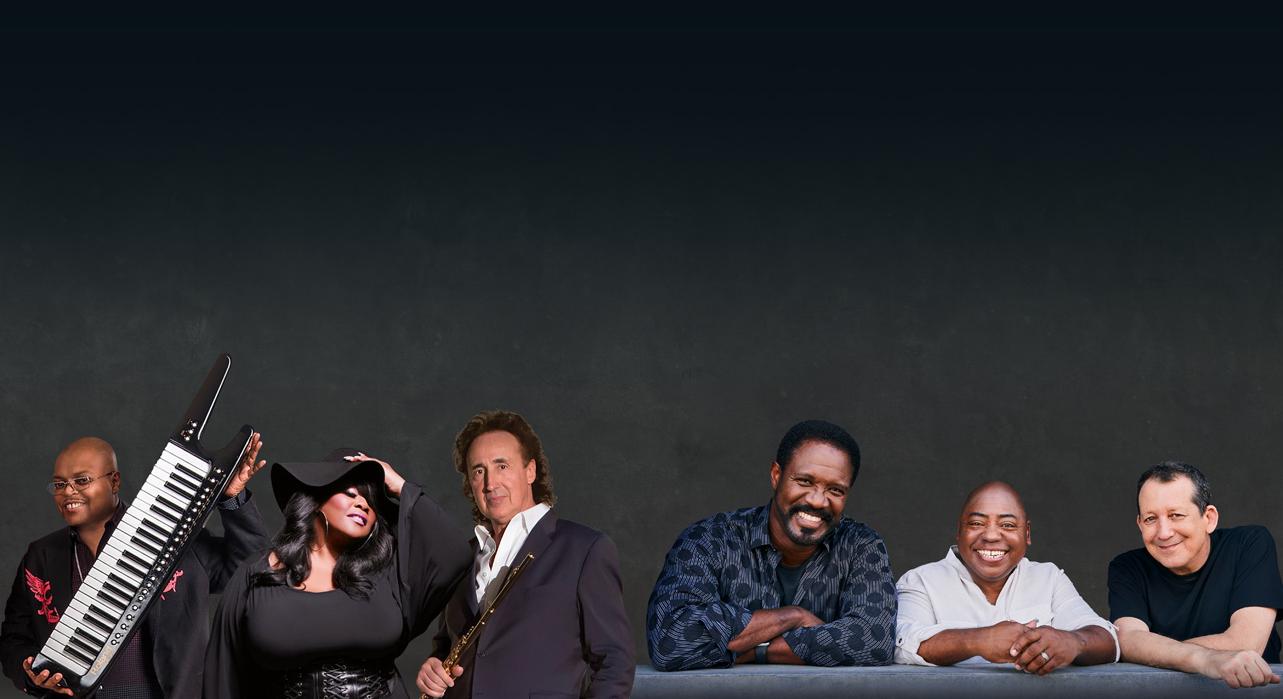
June
|

| James Lloyd Alexander Zonjic WINNER DETROIT MUSIC AWARDS GRAMMY NOMINEE FROM PIECES OF A DREAM
Maysa
Saturday
| 8:00pm Smooth Vocals, Funk & All That Jazz
GET TICKETS ONLINE AND INFO AT: smoothjazznj.com | 973-761-7339 The Woodland 60 WOODLAND ROAD, MAPLEWOOD NJ SMOOTH JAZZ NJ AND MAPLEWOOD DIVISION OF ARTS & CULTURE PRESENT 2018 GRAMMY WINNER GRAMMY NOMINEE MARQUEE CONCERTS
Saturday
4
8:00pm Jeff Lorber Everette Harp | Paul Jackson Jr. Jazz | Funk | Soul
Charles Mingus At 100: Remembering a Genius
As a Bandleader, He Was Demanding, Frequently Changing the Direction of a Prepared Piece Without the Use of Notated Music.
BY JAY SWEET
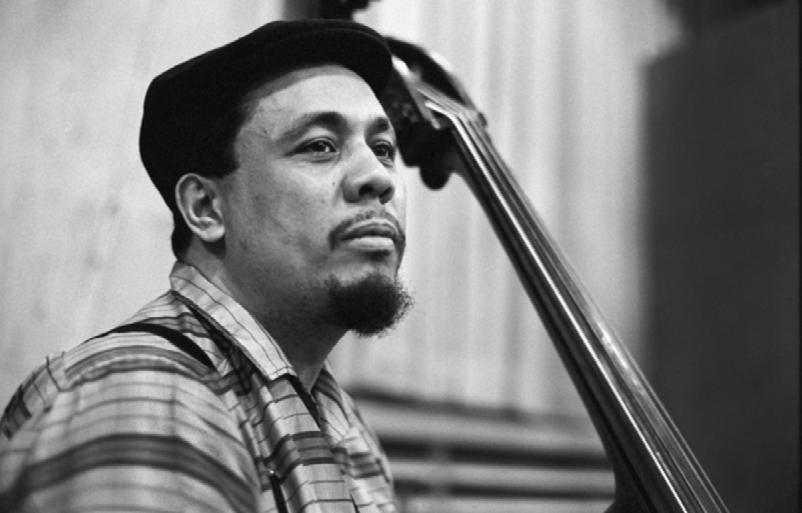
Charles Mingus is considered one of the most ambitious and imaginative composers, bandleaders, and bassists in the history of jazz. In addition to his highly original music, Mingus was known for being outspoken and having a no-nonsense attitude when it came to his music. Today, the works of Mingus have perhaps been preserved, studied, and analyzed more than any other jazz musician, except for Mingus’ hero Duke Ellington. A deep dive into Mingus’ extensive recordings showcased highly original music encompassing elements of nearly every popular subgenre of African-American music. Additionally, Mingus had a strong knowledge of European classical music which he often incorporated into his music. With April 22, 2022, marking his centennial birthday, his music and life will be celebrated by musicians and fans worldwide.
Born in Nogales, AZ, on April 22,
11 APRIL 2022 JERSEY JAZZ
JAZZ HISTORY
PHOTO BY DON HUNSTEIN
1922, Charles Mingus, Jr., moved to the Watts area of Los Angeles after his parents divorced. He was of mixed race, with African-American, Chinese, German, and Native American ancestry. Being a minority of a minority, he often felt disconnected from any community and was at times a victim of harsh discrimination. Heavily aware of racial tensions and inequality, Mingus was outspoken about such issues and later incorporated his views on racial injustices into his music, poetry, and political rants. To disconnect from his environment, Mingus sought solace in music. His first musical inspiration came from classical records and the music of the Black church. Soon after, he became heavily inspired by the music of Ellington. He first began studying the trombone, but early training on the instrument was fragmented. After struggling to gain
proficiency, he began playing cello before eventually settling on the bass.
In his early 20s Mingus began performing with jazz’s first great virtuoso and biggest star, Louis Armstrong. While he loved the music of the New Orleans legend, he felt uncomfortable with Armstrong’s stage antics, which in his mind connected Armstrong to the racial tradition of minstrelsy; and he quit the group. After leaving Armstrong, Mingus thought it essential to gain further proficiency on the bass. He was determined to match the skills of Ellington’s recently deceased bassist Jimmy Blanton and bass virtuoso Oscar Pettiford. Through some instruction with his mentor, Red Callender, and various symphonic players, Mingus developed proficiency on the bass that was rarely matched. He also became further dedicated to composition and began studying piano and classical forms.

Through Callender’s shared contacts, Mingus began recording as a studio musician while also performing with the Strings and Keys Trio and various other groups. He also became active on the Los Angeles jam session scene and befriended musicians such as saxophonists Dex-
ter Gordon and Art Pepper. During the mid-1940s, Mingus was already thinking with a degree of grandeur and had a growing desire to present his original music, but he was still relatively unknown. To gain a more substantial reputation within the jazz community, it was necessary for
12 APRIL 2022 JERSEY JAZZ NJJS.ORG
JAZZ HISTORY
him to first come to prominence as a sideman. During this time, knowledge of Mingus’ abilities increased while he was working as a bassist with star bandleaders such as Lionel Hampton and Illinois Jacquet. His activities were still somewhat limited, despite his apparent skills, and, as a result, he grew frustrated. To survive, he began working for some time as a postman, a job he returned to sev-

eral times during his early career.
By 1950, it seemed as if Mingus had given up on making a career in music, but he rallied when asked to join the Red Norvo Trio, a celebrated group that included the guitarist Tal Farlow. Never one to compromise, Mingus left Norvo when he felt the racial pressures of being the only man of color within the trio. He then relocated to New York and began participating in jam sessions with noted bebop innovators. In 1953, Mingus joined the Duke Ellington Orchestra for a short time but was fired after a violent altercation with Ellington’s trombonist, Juan Tizol. Despite his reportedly volatile nature, several well known musicians continued to take a chance on Mingus, and he worked and recorded with legends such as Charlie Parker, Art Tatum, and Lenny Tristano, among others.
Determined to showcase his com-
“ IN 1959, MINGUS PRESENTED HIS MOST CELEBRATED ALBUM, MINGUSAHUM . ”
positions, Mingus and drummer Max Roach established Debut Records in 1952. The label released several vital recordings, including the widely celebrated 1953 Massey Hall concert album, featuring Mingus with Charlie Parker, Dizzy Gillespie, Bud Powell, and Roach. Mingus’ activities throughout 1953 earned him the “New Star Bassist Award” in DownBeat Magazine’s first Critics Poll.
After gaining the public’s attention, Mingus began to further present his experimental and long-form compositions with a new group, Jazz Workshop. As a bandleader, he was
demanding, frequently changing the direction of a prepared piece without the use of notated music. Additionally, his works began to incorporate such a varying degree of subgenres that further study from his bandmates was often required. In 1956, Mingus released his first major label debut Pithecanthropus Erectus on Atlantic. It showcased new modernism in jazz. He followed that album with several other ambitious releases such as The Clown (Atlantic: 1957) and East Coasting (Bethlehem: 1957).
In 1959, Mingus presented his most celebrated album Mingus Ah
13 APRIL 2022 JERSEY JAZZ NJJS.ORG
JAZZ HISTORY
Um (Columbia Records). The album explored Mingus’ unique take on African-American musical forms that inspired him as a youth and artist. The most discussed and controversial track from the album is the politically fueled composition, “Fables to Faubus,” which was written as a protest to racist Arkansas Governor Orval Faubus who tried to prevent the integration of a school in Little Rock, AK. The original presentation of “Faubus of Faubus” included biting lyrics calling out Faubus and President Dwight Eisenhower. Uneasy with the content, Columbia Records chose only to release an instrumental recording of the tune. The full version with lyrics would later appear on the 1960 release, Charles Mingus Presents Charles Mingus (Candid). Moving into the 1960s, Mingus released more impressive albums of original material, such as Blues and
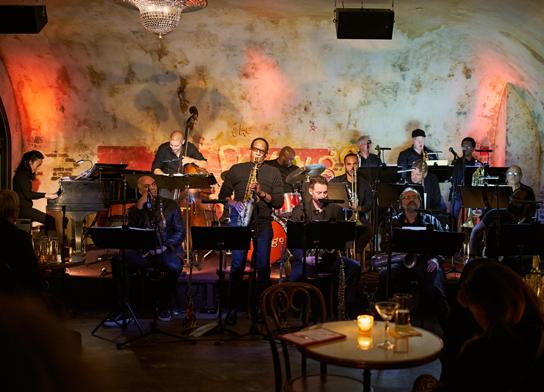
Roots (Atlantic: 1960,) and Tijuana Moods (recorded in 1957 but released by RCA in 1962). During this time, Mingus began presenting multi-reedist Eric Dolphy, one of the most unique voices in jazz, as a member of his working band. In 1962, Mingus attempted to showcase a large ensemble for a concert and recording at New York’s Town Hall. The event received uneven reviews and nearly
derailed Mingus’ career. However, he rallied once again with the release of the masterpiece The Black Saint and the Sinner Lady (Impulse!: 1963). Other widely celebrated Mingus albums followed, along with a trio album, Money Jungle (United Artists: 1963), with Ellington and Roach.
By 1966, interest in Charles Mingus and his style of jazz had begun to wane. The death of Eric Dolphy and
the breakdown of many of Mingus’ business and personal relationships led to several negative episodes, including eviction from his studio and a stay at Bellevue Hospital. The late 1960s remained a particularly dark period for Mingus, as his activities and ambition had become more limited. In 1971, his controversial autobiography Beneath The Underdog (Alfred A. Knopf) was released, sparking a new interest in his music. With the release of the album, Let My Children Hear Music (Columbia:1972), Mingus was again creating at a high level. With a renewed interest in his music, he remained relevant performing acoustic jazz in a market that was now heavily saturated by electric experimentation. His music at this time was best represented by the albums, Changes One (Atlantic:1974) and Changes Two (Atlantic: 1974).
By the mid-1970s, Mingus’ health
14 APRIL 2022 JERSEY JAZZ NJJS.ORG
JAZZ HISTORY
Members of the current Mingus Big Band
PHOTO
COURTESY OF THE DJANGO
was suffering. When he received the diagnosis in 1978 that he had ALS (Lou Gehrig’s Disease), it was clear that his time was limited, and in response, he worked feverishly to present as much music as possible. The result was several ambitious works such as Cumbia and Jazz Fusion (Atlantic: 1977) and Three or Four Shades of Blues (Atlantic: 1977). Towards the end of his life, Mingus began working with singer-songwriter Joni Mitchell for the music that would eventually appear on her album Mingus (Asylum: 1979). After experimenting with healers and alternative medication in Mexico, Mingus passed away on January 5, 1979, at age 56.
After his death, Mingus’ wife and manager, Sue Mingus, quickly went to work finding ways to continue to preserve his music and legacy. Through such efforts, even 40 years after his death, Mingus’ music continues to
gain popularity. With his legacy now secured, Mingus will continue to be recognized as one of the greatest composers of the late 20th Century.
Almost immediately after hisdeath in 1979, Sue Mingus began formulating groups such as the Mingus Dynasty, Mingus Orchestra, and Mingus Big Band, that would continue performing his music. The Mingus Big Band is currently in residence at The Django in the Tribeca/Soho section of Manhattan and will perform this month on April 4, 11, and 18. There will also be several other Mingus-inspired performances this month at the club led by such musicians as multi-reedist Scott Robinson, trombonist Conrad Herwig, and pianist Helen Sung.
: Watch the News section of njjs.org for more on Mingus throughout the month of April
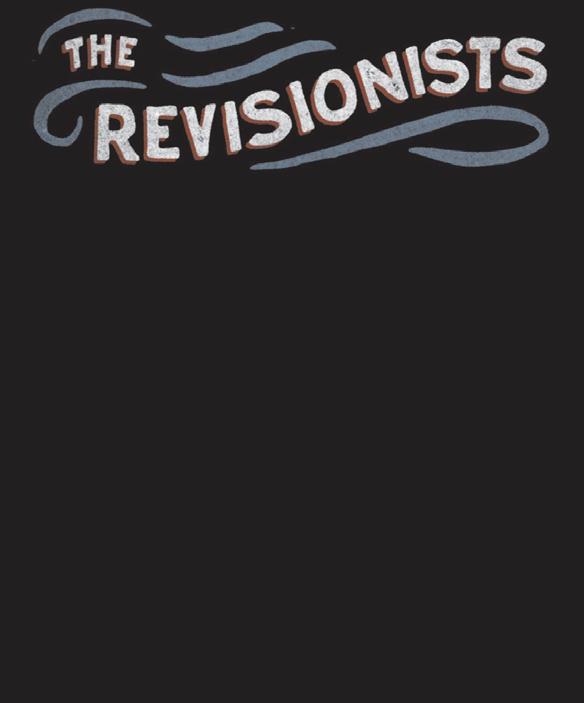



NJJS.ORG 15 APRIL 2022 JERSEY JAZZ
JAZZ HISTORY
is a proud supporter of this event. For the complete performance schedule, visit grunincenter.org. Grunin Center Box Office Hours Monday-Friday 12:00pm-5:00pm 732-255-0500 College Drive P Toms River, NJ Contact the Box Office two weeks prior to any show to arrange for disability and accessibility services. SUNDAY, APRIL 24 • 3:00pm • Main Stage
Musicians on Mingus
Bassists Mike Richmond and Boris Kozlov and saxophonist Alex Foster are members of the Mingus Big Band. Here are some of their thoughts about the legendary bassist/composer.
On Hearing Mingus for the First Time:
Mike Richmond › I grew up in Philadelphia, and the jazz station there played quite a bit of Mingus on the radio. As a bass player, I was quite impressed with how he was playing. While at school in Philadelphia, I drove up the turnpike with my friends to see him play in New York when I was in college. This was around 1966—places like the Village Gate and other various clubs.
Boris Koslov › Back in the early 1980s in Soviet Russia, people were throwing around names, and somebody heard the name Mingus and mentioned his name to me. There were no records of him, however, of any kind. Back in the early 1990s, I was going through an illegal copy of the Real Book, and I was playing through tunes in the book on the piano, and I came upon “Pussy Cat Dues,” and it just jumped at me from the page. It was so hip and groovy.
Alex Foster › I first became aware of his music probably when I was about 13 years old while living in California. I had one of his records, which I still have, Charles Mingus Presents The Charles Mingus Quartet Featuring Eric Dolphy (Candid: 1971). That was the one I heard. As a kid, I was a clarinet player, and I got a call to go to Fantasy Records. We were working on the session, and the engineer said, “You see that bass in the corner? That’s Charles Mingus’ bass.”
On Mingus as a Bassist:
Richmond › He was a virtuoso. He was classically trained and one of the only reasons he couldn’t play in an orchestra was because he was Black. He knew the bass from the bottom to the very top. He knew how to play with the bow, had a nice vibrato, and could play technically. He would take these long solos, acapella solos, that are completely virtuosic. The only people
who could play like that in the thumb position at that time were Red Mitchell and Scott LaFaro. He didn’t play with two fingers, just one finger. He played a lot lighter than people thought; that is how he could play extremely up-tempo using eighth notes when he was soloing as Paul Chambers did. One thing I saw him do on gigs was bowing underneath the strings to play a 10th. That’s how he thought! When I first saw it, it was like, “This guy just invented the wheel.”
Koslov › Mingus was a true virtuoso, and I think even non-bass players can hear his playing and identify that it is Mingus. He really had his own voice. You can see his compositional concept of “shape,” which took precedence over harmony, melody, or time. If it works, it works. That’s the kind of the approach he took to bass playing. When listening to him during his early period, it is interesting to hear the similarities of (Red) Callender, (Jimmy) Blanton, and Mingus. At that particular time, I probably wouldn’t be able to tell who was playing. I definitely feel he became the Mingus that we know (as a bassist) around 1957 or 1958. I can pinpoint some things he was the first to do technically, including certain pull-offs, the first to do one finger tremolos, he was the first to tap, which I discovered on a video Sue Mingus showed me on “I Can’t Get Started.”
16 APRIL 2022 JERSEY JAZZ NJJS.ORG
JAZZ HISTORY
Mingus on Mingus
Eric Mingus is the son of Charles Mingus and Mingus’ third wife Judy Starkey. He is a musician, singer, and poet who has released several solo projects and has worked with artists such as Elvis Costello, Todd Rundgren, and Levon Helm.
How would you describe Charles Mingus, the person?
He was kind, he was funny. I rarely have seen him get mad, and if he was, it was only because he was being disrespected. I know that a lot of things that people say about my dad have become “the myth,” or whatever you want to call it. If he was as volatile and was really like everything that has been said about him, he wouldn’t be allowed around kids. The era in which he lived in,
the racism was more systemic and more present. His music was being judged by these white men who were telling him how he should be writing his music, and that was absurd.
What do you think your father would be doing in today’s musical climate if you had to speculate?
He would be experimenting, and I know he would love things like ProTools and to have the ability to edit.
On Let My Children Hear Music (Columbia: 1971) he experimented with putting Charlie Parker licks into those tunes. It’s almost like we do now with samples, but, of course, there was no digital editing at the time. He was with Teo Macero and was trying to do really creative things with sound by using the studio as an instrument.
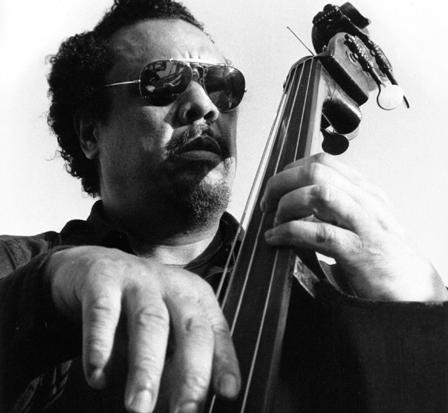
How did your father’s music influence your music, and who are some of your other influences?
He really was a teacher to me. If there is any one thing my father taught me, it is that you have your own voice, and you should put it out there and be confident in it. I remember the first time we really got into it was when the movie Sounder came out, and Taj Mahal did the score. I loved
the film and soundtrack, and I was playing it on the turntable, and my dad walked by and asked, “What’s that?” I said, “That’s Sounder.” Then he said, “That’s the blues.” I said, “The what?” Then he started playing all sorts of things and things you might not expect him to put on. You would expect him to put on his records, but he put on Howling Wolf records and talked to me about Hubert Sumlin.
17 APRIL 2022 JERSEY JAZZ NJJS.ORG JAZZ HISTORY
It was just fun. So, then he started explaining more things to me. Then, of course, he was like, “So, you like music?” Then he handed me a Count Basie record, which was a weird one. Hollywood...Basie’s Way (Command Records: 1971) When I listened to it as a kid, I was like, “What is this?” Later on, I learned to appreciate it and got more into the Quincy Jones stuff with Count Basie. We talked about music a lot and that was the most honest communication we ever had. What would you like people to remember about your dad and his music?
The music. Just play the music. It’s kind of hard because people have their own version of who my dad was to them. I want him to be remembered for his music because that is what he would like to be remembered for. Just listen to the records that he is on.
Is there anything more you would like to say about your father?
My life with him was fun. We loved to go out and have dinner. He loved to take walks. He used to come and get me after my parents split up, and we would take a bike ride. He would put me on the back of his bike, and we would ride around Central Park. We would just wander around the city, and I would meet all of the crazy people -- these weirdos, and then it turns out these were (prominent) New York poets and artists. My dad just loved life and loved living it. We should all be so lucky. I loved him. More than anything, and I wish he were here to celebrate it. You know it’s a drag that he’s not around. My dad was very much about being an individual. He did not feel that your identity should be determined by the music you play, the race you are or aren’t, and other things. To me, that speaks of freedom.
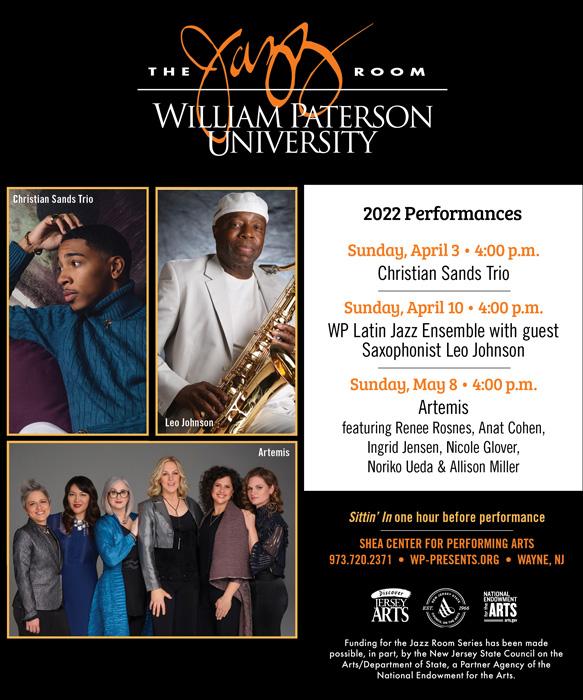
NJJS.ORG 18 APRIL 2022 JERSEY JAZZ
JAZZ HISTORY
Carmen McRae: A Personal Appreciation
The legendary vocalist would have turned 100 on April 8, 2022. We asked Anais Reno, our March Rising Star, to write about one of her heroes.
Abeautiful part of enjoying art is dissecting its threads and understanding how they weave together into different tapestries. Though potentially unexpected partnerships, the rawness of Shakespeare, the complexity of a lyric, and the harmony of a jazz standard can create a rare product when intertwined. There is power in Carmen McRae’s ability to incorporate these threads of artistry into her performances, while appearing casual enough to make it seem easy. A core aspect of studying Shakespeare is extracting every drop of
intent possible from the text through usage of vowels, consonants, and articulation. In doing so, most words in the English language sound like their meaning, and half the work is already done. Whether or not McRae studied this, its effect was ever-present in her musical delivery. Her rendition of “Comes Love”, composed by Sam H. Stept with lyrics by Lew Brown and Charles Tobias, is riddled with it. As she lists methods to solve virtually every problem one might face, she perfectly sets up the punchline that love is the only one that defeats us all. To
achieve this, she plays with the given lyric: In the first section, she emphasizes the alliteration of “rainstorm” and “rubbers” while singing “comes a rainstorm, put your rubbers on your feet” to accent their cause-effect relationship. She is particularly percussive on the following line, “comes a snowstorm, you can get a little heat” to stress the absurdity of how simple it is to ease the impact of such an
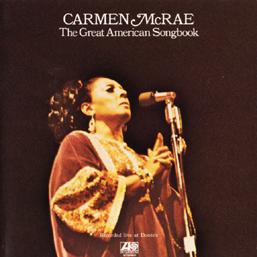
event. However, as she gently prolongs the first consonant of “love” in “comes love, nothing can be done”, it becomes clear that this entity is the exception to everything she previously said. This natural genius in handling lyrics made every song she sang its own tapestry. Singers often strive to vocalize as though they are speaking, so as to not seem contrived. Carmen McRae’s musical choices, while angular, Shakespearean, and individualistic, were clearly aligned with the way she spoke. You can hear this on The Great American Songbook (Atlantic: 1972), one of her live albums. This ability rippled throughout every record, song, and video performance of hers. It is what made her music accessible despite her quiet intensity. It is what made her sound at ease while singing breathtakingly nuanced lines. It is what made her not only an honest singer, but an honest artist. — ANAIS
RENO
19 APRIL 2022 JERSEY JAZZ NJJS.ORG JAZZ HISTORY
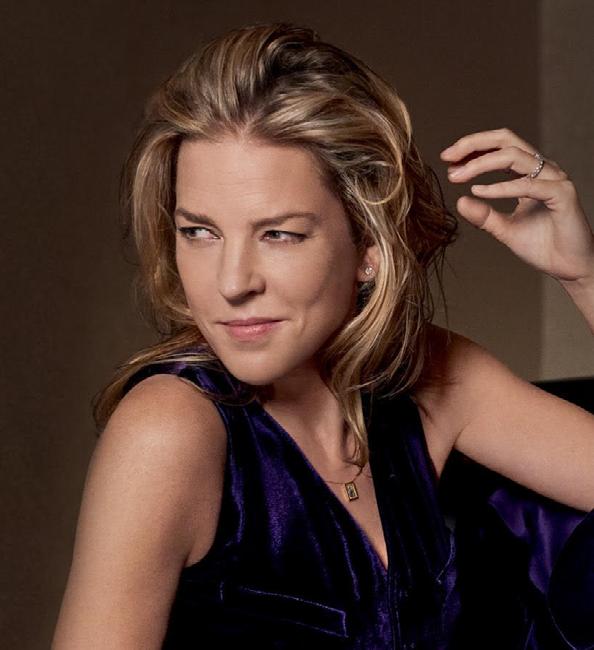
Diana Krall: Early Exposure to Great Piano Players Shaped Her Career
Seeing “Oscar Peterson and Monty Alexander Perform Live ... Definitely Changed My Life.”
BY SANFORD JOSEPHSON
Diana Krall grew up listening to great piano players because her father, a stride pianist, “had an incredible record collection of 78 rpms. I was very lucky to have that foundation.”
In an email interview before her April 3rd concert at the New Jersey Performing Arts Center, Krall said that, “Oscar Peterson, Monty Alexander, and Bill Evans were the really important artists for me as a young piano player in high school, not to forget playing along with Elton John records in our basement.
“I grew up on Vancouver Island, Canada,” she continued, “but I got a chance to see both Oscar Peterson and Monty Alexander perform live when I was about 16. Those experiences definitely changed my life.” As for Bill Evans -- “I love Bill Evans. The first recordings I heard were given to me by my high school band director, Bryan Stovall. They were Live at the Village Vanguard (Riverside: 1961) and Waltz for Debby (Riverside: 1962). Then, I heard the albums with Tony Bennett and Claus Ogerman, and, of course, Kind of Blue (the
20 APRIL 2022 JERSEY JAZZ
NJPAC PHOTO BY MARY MCCARTNEY
JAZZ AT
classic 1959 Columbia Miles Davis album featuring Evans on piano).”
The late pianist Jimmy Rowles has been credited with encouraging Krall to add vocals to her piano playing when she took lessons from him as a teenager in 1983. “Jimmy Rowles,” she said, “was every singer’s favorite piano player, but he was my favorite singer! The time I spent with Jimmy as his student
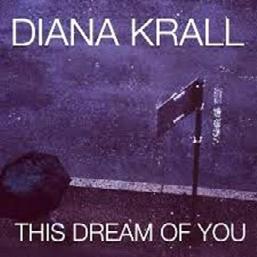
was so important. We shared a love for songs, especially more obscure ones, and he just said in that gravelly tone, ‘If you want to sing, just sing.’”
Among the many other vocalists accompanied by Rowles were Sarah Vaughan on Sarah Vaughan and the Jimmy Rowles Quintet (Mainstream: 1974) and Carmen McRae on her live 1972 Atlantic album, The Great American Songbook. McRae once said that Rowles was, “the guy every girl singer in her right mind would like to work with.”
Krall’s 2017 Verve release, Turn Up The Quiet, was the last album produced by Tommy LiPuma, who died in March of that year. In his review, DownBeat’s Bobby Reed pointed out that, “At this point in her career, Krall knows how to put her own distinctive stamp on decades-old standards, making them sound fresh and vibrant, while still honor-
“
KRALL KNOWS HOW TO PUT HER OWN DISTINCTIVE STAMP ON DECADES-OLD STANDARDS. ”
ing the melodies that Great American Songbook fans know so well.”
LiPuma produced 11 albums for Krall, beginning with the 1994 GRP recording, Only Trust Your Heart. Her 2020 Verve album, This Dream Of You was described in a press release as, “a loving conclusion of Diana’s 25-year working relationship with Tommy LiPuma. Shortly before LiPuma’s passing in 2017, the producer and artist discussed the abundance of great music recorded at their last sessions together. LiPuma was adamant that this music
should be completed and issued. Krall and engineer, Al Schmitt, therefore mixed and sequenced the album for this 2020 release and, as such, honor their great and much-missed friend.”
“I was so lucky to have worked with Tommy LiPuma and engineer, Al Schmitt,” Krall said. “We were such great friends. I’m very excited to play some new songs from that album (This Dream Of You). All those memories and happy times stay with me as we begin again.”
Krall has been nominated for nine Grammy Awards and won
21 APRIL 2022 JERSEY JAZZ NJJS.ORG
NJPAC
JAZZ AT
two, for Best Jazz Vocal Album: When I Look in Your Eyes (Verve: 1999), and Live in Paris (Verve: 2002). She also had eight albums that debuted at the top of the Billboard Jazz Albums chart and won 10 Juno Awards, presented annually to Canadian artists and bands.
When selecting songs for an album or performance, she said, “I just pick songs I like, in which I can find a story, whether it is Joni Mitchell or Irving Berlin. But, about the greatest composer I can think of is Duke Ellington.”
Her 1996 Impulse! album, All For You, was dedicated to Nat King Cole. She described it as “a very special album. My manager at the time, Mary Ann Topper, and Andre Menard (Co-Founder and Artistic Director of Festival International de Jazz de Montreal) booked us for a two-week residency at a club at the

“ WE ARE ALL SO EXCITED TO PLAY FOR YOU AGAIN. ”
Montreal jazz festival playing a tribute to the Nat King Cole Trio. Bassist Paul Keller, guitarist Russell Malone, and I really had time to work things out before we went in to record.”
Looking ahead to the April 3rd NJPAC concert, Krall said, “I will be so happy to be back on the stage
again with my longtime friends and colleagues, Robert Hurst on bass, Karriem Riggins on drums, and Anthony Wilson on guitar,” she said. “I know we will be emphasizing love, and we have a lot of songs in our repertoire that talk about that. We are all so excited to play for you again.”
Before ending the interview, Krall added, “I have to mention Shirley Horn. She was totally at one with her piano. Joni Mitchell and I went to see Shirley and her extraordinary trio in LA one evening. We all sat at the bar, smoking cigarettes, and totally digging every moment. That was a perfect night.”
: Diana Krall’s NJPAC concert is at 7:30 p.m. on Sunday, April 3, in Prudential Hall. For information about tickets, log onto njpac.org. Covid-19 vaccination card or proof of negative Covid test is required.
22 APRIL 2022 JERSEY JAZZ NJJS.ORG
JAZZ AT NJPAC
BY
PHOTO
MARY MCCARTNEY











METUCHEN JAZZ thebasecamp.art Metuchen celebrates International Jazz Day and April is Jazz Appreciation Month! Metuchen Library | 732-632-8526 480 Middlesex Avenue, Metuchen, NJ FREE Live Event! MIKE LEE QUARTET Jazz Concert April 30, 2022, Saturday, 2pm metuchenlibrary.org METUCHEN PUBLIC LIBRARY metuchenartscouncil.com friendsofmetuchenartscouncil.org fotml.org Scan for more info or go to https://tinyurl.com/3p9jhu9a Registration a MUST. Space is limited.
A Jersey Jazz Interview with Frank Tate
BY SCHAEN FOX
From 1972-1975, Frank Tate was the house bassist at Blues Alley in Washington, DC. While there, he played with several jazz luminaries including trumpeter Bobby Hackett, pianists Dave McKenna and Marian McPartland, and tenor saxophonist Zoot Sims. He moved to New York City in 1975. Tate’s 2001 Nagel Heyer Records album, Live in Belfast, received widespread acclaim. It featured McKenna along with tenor saxophonist Harry Allen, guitarist Howard Alden, and drummer Butch Miles. Wrote AllAboutJazz’s Dave Nathan: “All the tracks capture the essence of jazz, melody, improvising, imaginative solos, and strong ensemble work.”

24 APRIL 2022 JERSEY JAZZ NJJS.ORG
TALKING JAZZ PHOTO BY LYNN REDMILE
JJ What was your early involvement with jazz like?
FT I was a trumpet player till I was 23. My high school was completely segregated. And, my college was, too. But when I was a teen, I was playing along with records, Miles Davis and Dizzy Gillespie and people like that, and I wanted to get out and play in public. I’d heard about a Black piano player in Greensboro (NC), who had a trio playing at a club. I asked him if I could sit in and he said, “Yeah.” I was a real nuisance. I was sitting in every night that I could. That’s how I got in front of the public for the first time.
I’d done it in the college orchestra and in the high school band, but never as a soloist or any kind of feature player. That got me out in front of everybody. I went to Greensboro College, and there was a jazz club across the street from the campus. This is a Methodist school, and they had a strict no drinking policy; and the club was off limits. So, it goes without saying that I was in there every night. One night, someone said, “Got a phone call here. Anyone named Frank Tate?” I thought it was the school telling me to pack my bags. There was a man named Burt Massengale. He had
“ YOU COME TO NEW YORK AND I WILL PUT YOU TO WORK. ”
a nine-piece society band that did country clubs and that sort of stuff. He said, “My trumpet player just quit. I need somebody for this weekend.”
I spent a year and a half on that band. I left when college was done, but I wanted to get back into playing. Burt couldn’t fire the [new] trumpet player. He said, “I just can’t put you back in the band as a trumpet player, But the bass player is leaving. I think you’d be a good bass player. You want to try it?” He cosigned a loan at a finance company, and we bought a bass for $200. A month later, I was in the band. That’s how I started. I didn’t know anything. I knew the book because I played it as a trumpet player. I knew the tempos. I knew the beginnings and the endings. And, I knew the routine of the band. If you’ve learned a first instrument and done it at all well, it helps you to play the next instrument, so I started playing the bass, and that’s it.

JJ When you were a relatively new bass player in Washington, DC, how did you get to front the Blues Alley band?
FT I was buddies with the owner. I’d go there every night. We’d have a few beers after closing, and we got very friendly. Out of the blue, he said, “I’m thinking of changing the house band. I want different people. How would you feel about leading the house band?” I couldn’t believe my ears, because I
25 APRIL 2022 JERSEY JAZZ NJJS.ORG
TALKING JAZZ
TALKING JAZZ
had never had any gigs with anybody of any name. They were consequential people, but they weren’t known to anybody outside of their block. I put together a house band. I had a piano player and the drummer Tom Bailey. He’s still a very close friend of mine. And, the first guy in there was Wild Bill Davison, and he brought Claude Hopkins down with a real piano player. My first gig at Blues Alley was with those guys. I met Bobby Hackett there. I met Zoot Sims, Marian McPartland, Teddi King, Maxine Sullivan, Anita O’Day, Max Kaminski, and a lot of people there. I met Ed Polcer there, and after I worked for him, he told me, “You come to New York, and I will put you to work.” I did, and he did. Marian McPartland told me the same thing, “You come to New York, and I’ll put you to work in my trio.” And true to form, she did. I spent three years with her. And that

all came about from having been with the house band at Blues Alley. It probably shouldn’t have happened. I was so far in over my head. What I did have was good timing, and I knew a lot of tunes. I wasn’t that sure of the changes to a lot, but I just kind of felt my way along; and I guess I was doing something right, because Hackett hired me out of there and brought me up to Cape Cod for what was supposed to be a five-year gig. We weren’t there more than three months, when Bobby went into a severe diabetic coma and was never well at all after that. Warren Meadows who owned The Columns in Cape Cod asked us about working with Dave McKenna for the rest of the summer. So, I wound up spending four or five summers with McKenna up on Cape Cod, and more. One summer went from May 1 to New Year’s Eve.
I was young and like a sponge. I was
26 APRIL 2022 JERSEY JAZZ NJJS.ORG
PHOTO BY LYNN REDMILE
In 2013, at Princeton JazzFeast
“ NEW YORK CHANGES EVERYTHING. ALWAYS HAS. ALWAYS WILL. ”
trying to learn everything I could from Dave. He was funny. He didn’t call a tune. He didn’t call tempos. The ship sailed at eight o’clock every night, and you were either on board or you weren’t. That’s how that worked. I just sat there and took in as much as I could. He had a tremendous following, and he has a fan club even now.
JJ What are your best memories of Bobby Hackett off the bandstand?
FT He was a very interesting guy. He was all about music, and with the possible exception of Dave McKenna, Bobby knew more about music than anybody. We’d go to his house occasionally and have dinner with
him and Edna, his wife. Hackett was just brilliant. He was a little tiny guy with a real deep voice.
JJ Tell us about the recording of the album, Live in Belfast
FT I had put a band together for a trip to Ireland and England. It was a dream band. Those guys are all my favorites. We had played in London and Cork and gone over the music a few times, but we didn’t overdo it. Also, I had worked with all four of those guys a zillion times so anything we knew the title of, we would be able to play. I’d been on the road with Butch (Miles) and Harry (Allen), and I spent years with (Dave) McKenna and Howard (Alden), so making that record was so easy.
JJ How did you connect with Marian McPartland?
FT When she came to Blues Alley, we got benched for a week. She brought her own trio in. But I was a big fan of hers, and I was in every night anyhow. She asked me to sit in.
I did, and that’s when she said, “You come to New York, and I will put you to work.” I came to New York and immediately joined her trio. The first thing we did was run off to Rochester for three weeks without a rehearsal. I still don’t believe it. We would rehearse some after that. But, we started the gig without a rehearsal. I was very close to Marian for the rest of her life. She would keep people for about three years, that was
her limit; which was fine. I was involved with the McKenna thing and I saw the potential conflict of, “Do I take off from Dave to go with Marian?” She called me for a gig, and I said “I can’t get off the McKenna thing.” And that was our way of saying, “Thanks. It’s been a blast.” I worked a little bit with her after that, but not much. She was always looking for young guys to bring up. She had Eddie Gomez when he was a kid, and Steve LaSpina, Mike Moore, and a whole bunch of great bass players.
JJ When you left DC for New York, did you notice any difference between the jazz communities?
FT I got on 54th Street, and there was Roy Eldridge. I was in a different world. Washington had some good musicians, almost every town does. All larger cities will have good jazz musicians that decided
27 APRIL 2022 JERSEY JAZZ NJJS.ORG
JAZZ
TALKING
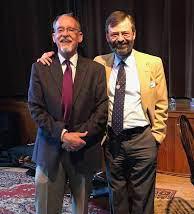
never to go to New York. But, New York changes everything. Always has, always will. Everybody that wants to really do something, basically, at some point, has got to go to New York and usually stays there. When I moved to New York, I started working with musicians that I never dreamt I would work with, except
for the ones that I met at Blues Alley. Marian McPartland once said, “When you move to New York, you’ll play a wedding or a private party some night, and people like Roy Eldridge will be in the band.” And she was right. Also, the people you meet in New York outside of the business, my lord. At the Carlyle, I met the showbiz crowd. One night Sarah Jessica Parker was seated with Matthew Broderick. Lauren Bacall walked in and was seated at the next table. Neither knew the other was there. They both turned, looked at each other and both of them screamed. All kinds of people came there. One was the Prime Minister of Israel.
JJ How did you meet Rossano Sportiello?
FT Matt Domber (Arbors Records) had that jazz party for years, and Dan Barrett told me, “There is a guy from Italy coming over, and he’s the real
Playable, performance-ready arrangements for solo jazz guitar. Each song is written in notation, tablature, and with chord diagrams. Choose from nearly 50 standards, which are included in two songbooks and available individually.

Praise from players at all levels ...
“Lots of guitarists who do weddings would benefit from your arrangements. I’ve learned Fly Me To The Moon , and I’ll be playing it at my next gig. Keep arranging, Mark. We need you.”
—MW, THEWEDDINGMUSICIAN.COM
“Mark, I enjoyed your arrangement of My Romance very much. I teach guitar and am always searching for chord melody pieces that are a bit challenging but ‘doable’ by intermediate players. Keep up the great work!”
—GB, MASSACHUSETTS
“I’m so happy with your arrangements! As a beginner, they are accessible even to me and are excellent studies of chord movement. Can’t thank you enough for these excellent arrangements!”
—DL, KENTUCKY
NJJS.ORG 28 APRIL 2022 JERSEY JAZZ
TALKING JAZZ
Frank Tate, left, with Rossano Sportiello.
The Mark Clemente Chord MelodiesTM for Guitar
MarkClementeGuitar.com 201.444.9830
deal.” Rossano had a late set, like 1:30 in the morning, and I hung around because I had told Rossano I’d like to play a few tunes with him. He was everything that I had ever hoped that I would find in a musician. On the stand and off, he is so much fun to be around. I just love his playing.”
JJ Tell us about your connection with Zoot Sims.
FT Via Blues Alley. I got friendly with Zoot and his wife Louise. Of course, I got to know Al Cohn, also at Blues Alley. They’d stay at the Thomas Jefferson Inn which was a couple of blocks away. We’d go there and party all night, the drummer, Zoot, and I. When the wives were there, we had a dinner party which turned into a screaming hilarious night. I’m surprised we didn’t get thrown out of the hotel. I guess they had good walls. I loved Zoot, but he wasn’t so much fun in the morning, when he had two
hours sleep and we’re getting on a plane. But basically, he was a lot of fun and a very bright guy who had almost no formal education. Somebody told me they heard him when he was 14, and he sounded like he did later, already a work well in progress. His parents were vaudevillians, I think, and he was, like that song, “Born in a Trunk in Pocatello, Idaho.” He painted houses for a while, early in his career. The music business is just dreadful at times.
I was honored to have done two recordings with him for the Pablo label, The Innocent Years, and I Wish I Were Twins. What I wish is that I could do them over again. I didn’t like the sound much. I would have done so much better now than I did then. I was in over my head so often, I found myself saying, “Oh, what the hell am I doing here?” I guess somebody saw something, because they were calling me, but I loved working with Zoot.
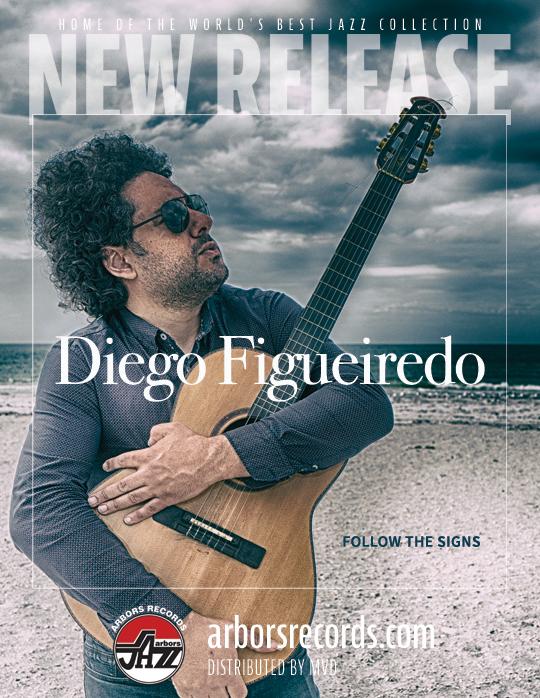
NJJS.ORG 29 APRIL 2022 JERSEY JAZZ
TALKING JAZZ
In My Mind: Monk at Town Hall
MacArthur "Genius Grant" recipient Jason Moran sets o The Town Hall Centennial Series with a performance of his multimedia project “In My Mind: Monk at Town Hall," a program in honor of Thelonious Monk’s 1959 landmark performance and subsequent release of the The Thelonious Monk Orchestra at Town Hall-- the only recording of the Orchestra.


FOR TICKETS: (800) 982-2787 & TICKETMASTER.COM THETOWNHALL.ORG 123 W 43RD ST, NYC | @TOWNHALLNYC Jason Moran MAY 0 6 FRI 8P M

Trumpeter Anthony Hervey: Inspired by Freddie Hubbard’s Solo on ‘Cantaloupe Island’
“Unlike Anything I Had Heard in My Life. I Said, ‘I Want to Do What He’s Doing.’”
BY SANFORD JOSEPHSON
Anthony Hervey was in the sixth grade when he discovered jazz.
“My mother encouraged me to play trumpet because my grandfather played trumpet,” he said. “I was very reluctant to do so, but she convinced me to do it and said I could quit after a year if I wanted to.”
Then, Hervey was casually watching television and noticed a documentary about Blue Note Records. “I just happened to click it on because it sounded interesting,” he recalled. “As soon as I clicked on the channel, there
was this clip of Freddie Hubbard playing a solo unlike anything I had heard in my life. I said, ‘I want to do what he’s doing.’” The clip was the Herbie Hancock Quintet playing Hancock’s “Cantaloupe Island” with Ron Carter on bass, Tony Williams on drums, and Joe Henderson on tenor saxophone. “I didn’t know who they were.”
Hervey said. “I didn’t even know it was Freddie Hubbard when I was watching it. But, in time, I found out.”
From that point on, Hervey began listening to any jazz he could possibly
31 APRIL 2022 JERSEY JAZZ
PHOTO BY VIOLA CHAN
RISING STAR
RISING STAR
find. “My grandfather, he really liked music, so when he found that I was trying to listen to more jazz, he would burn CDs for me. They would have Duke Ellington and Louis Armstrong, and then they would have Chris Botti and Maynard Ferguson. It was just all over the place. I didn’t know the difference. I knew it was all good music.”
In seventh grade, Hervey, who grew up in Miramar, FL, just north of Miami, started taking trumpet lessons from a local instructor, Mike Shaw. When asked about Hervey, Shaw said, “He is the most gifted and
talented student I have ever had. He has an amazing ear for jazz and possesses a natural talent for music. In the past, I have had students who either excel at improvisation or who take a more methodical approach to musical performance. Anthony is rare in that he possesses both abilities. He intuitively loves music, yes; but he also has an insatiable curiosity about the ‘how’ and ‘why’ behind it.”
Shaw recalled one instance when Hervey was asked to listen to, prepare, and transcribe a Wynton Marsalis solo for his next lesson.
“ WYNTON MARSALIS HAS CALLED HERVEY A ‘BEAUTIFUL TRUMPET PLAYER OF THE FIRST MAGNITUDE.’ ”
“Not only would he transcribe it and play it for me,” Shaw said, but “he would play three other variations he made of it in different styles.”
Hervey attended Dillard Center for the Performing Arts High School in Fort Lauderdale, and the Jazz Ensemble was a finalist in Jazz at Lincoln Center’s Essentially Ellington competition all four years he was there. Hervey was an Essentially Ellington outstanding trumpet soloist each year, and in his senior year, he received the Ella Fitzgerald Outstanding Soloist Award, for best soloist at the event.
Every year at Dillard, Hervey said, “We were trying to make sure our music was good enough so we could compete (in Essentially Ellington). Mr. Dorsey (Christopher Dorsey, Director, Jazz Ensemble) wanted us to sound like a pro band. It was really nice to be able to be around all the people in the Jazz at Lincoln Center band. It’s
one of the best bands in the world, and every member of that group has knowledge to share. There were also so many great students from other schools. I have formed strong friendships with many of them, and we cross paths all the time whether we’re playing or hanging. It’s a community.”
After graduating from Dillard, Hervey attended the Juilliard School in New York, graduating with a Bachelor’s Degree in Music in 2019 and a Master’s Degree in 2020. He stayed in New York after graduating and, in February 2020, opened for tenor saxophonist Branford Marsalis with a quartet called Citizens of the Blues. That quartet included pianist Isaiah J. Thompson, another Jersey Jazz Rising Star (November/December 2020), bassist Philip Norris, and drummer Domo Branch. The drum chair rotates among several performers, but Hervey, Thompson, and Norris started the group a few years ago when they
32 APRIL 2022 JERSEY JAZZ NJJS.ORG
RISING STAR

were all at Juilliard. “We have similar ideals when it comes to music and life values,” Hervey said. “We focus on the blues, and we’re rooted in music that has a groove and swings.”
Hervey also performed on bassist Christian McBride’s 2019 Grammy-nominated Mack Avenue big band album, For Jimmy, Wes and Oliver. That happened, he said, “super last minute. One of the trumpet players couldn’t make the recording session. I had just met Christian McBride a few months prior to that. So, I guess he thought about me. He said, ‘Can you come and make this?’ And, I’m on the record.”
Last summer, Hervey was part of a group called Young Stars of Jazz that performed at Jazz at Bryant Park, part of the Bryant Park Picnic Performances that took place throughout the summer in New York City. Other members of the group were Thompson, alto saxophonist Alexa Taran-
tino (March 2022 Jersey Jazz cover story), tenor saxophonist Julian Lee, bassist Endea Owens, and drummer Kyle Poole. “That was amazing,” he said. “There was so much energy and fire on the stage. We played some Jazz Messengers. We played some of Ellis Marsalis’ music. Then, everybody brought some of their own music. Everybody was at the top of their game.”
In November 2021, he was one of four ‘Young Lions’ featured on trumpet in a Jazz at Lincoln Center concert entitled “Wynton at 60”, celebrating the 60th birthday of trumpeter Wynton Marsalis, who is JALC’s Artistic Director. Marsalis has called Hervey a “beautiful trumpet player of the first magnitude.”
On April 17, the 25-year-old Hervey will be part of a “Jazz In The Key of Ellison” concert at the Kimmel Cultural Center in Philadelphia. The concert will celebrate the life of the writer, Ralph Ellison, presented in
33 APRIL 2022 JERSEY JAZZ
PHOTO BY GABRIELLE HERVEY
“
ROY
(HARGROVE) WAS
AT THE JAM SESSIONS WITH THE YOUNGER GENERATION. ”
music, words and images. Ellison, the author of the novel, Invisible Man, was also a talented trumpeter. The music will be provided by the Andy Farber Jazz Orchestra. “Andy Farber was my arranging teacher at Juilliard,” Hervey said. “Ralph Ellison was a great writer as well as a trumpeter. He was friends with a lot of jazz artists from Louis Armstrong to Thelonius Monk. Jazz music was a backdrop to his life and writings. This show celebrates that aspect of Ellison.” Farber describes Hervey as “an expressive player with a rich, bouncy tone. He’s a great listener and is always present to what is going on around him. That makes him valuable as a soloist and an ensemble player.”
On May 7, Hervey will perform in an eclectic concert led by Jon Batiste at Carnegie Hall. Called “American Symphony,” it will salute musical visionaries such as Duke Ellington, James Reese Europe, Mahalia Jackson, and Nina Simone. “I’m really excited about this concert and looking forward to it,” he said.
Although Freddie Hubbard was Hervey’s first jazz influence, others who have impacted his career include the late trumpeter Roy Hargrove, Wynton Marsalis, and pianist/ violinist Nicole Yarling, an Adjunct
Professor of Voice and Composition at the University of Miami, who runs a monthly First Friday Jam for young musicians in Miami, sponsored by the Gold Coast Jazz Society.
“I miss Roy all the time,” Hervey said. “My first two years in New York, I remember seeing him at Smalls. Sometimes, I played in the Evan Sherman Big Band and Roy would sit in with us. (Drummer Evan Sherman was Jersey Jazz’s Rising Star in March/ April 2020). Most people on that level -- you’re not going to see them in the clubs every night. Roy was one of the few who was actually there, at the jam sessions with the younger generation.”
Wynton Marsalis is “by far, one of my favorite trumpet players. Also, I’ve gotten to know him over the years. He’s a mentor of mine. We talk about trumpet and life a lot. I’ve learned so many things from him. He’s taught me that if you believe in something and are serious, then it matters. We have spent
a lot of time talking about sound. He approaches the trumpet in a way that is casual, like a singer. You ever notice that he’ll sometimes move his trumpet to the left of the room and then to the right? He’s actually playing to people. That has totally changed the way I approach trumpet and communicate with audiences. I hope I’m able to help others in the same way he’s helped me.”
Yarling said Hervey began attending her jams when he was in middle school. “He was super shy but extremely focused at an early age,” she recalled. “He was one of the students who really studied, not only jazz, but the instrument. I created a program in Miami called the Jazz Education Community Coalition (JECC). He would attend workshops and perform with the students. Much later, he would return as a part of the concert series. He is one of the most definitive examples of what great mentorship does for young musicians. I’m so proud of him!”
NJJS.ORG 34 APRIL 2022 JERSEY JAZZ RISING STAR
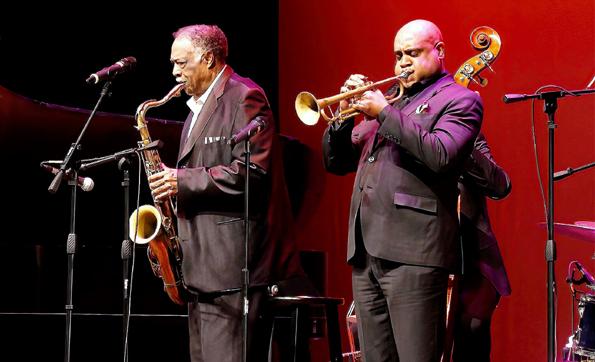
Stars Mix and Match as ‘Live’ Music Returns
“It’s Very Special to Perform with Tag Team Pianists. That’s When You Know You’ve Arrived.”
BY SANFORD JOSEPHSON
Since I Fell for You” was composed by bandleader Buddy Johnson in 1945. It became a hit for his vocalist (and sister) Ella Johnson and has been recorded by Dinah Washington, Bonnie Raitt, and Al Jarreau, among others.
It had a spirited revitalization on March 16 at the Sarasota Jazz Festival. During Houston Person’s main stage concert, pianist John O’Leary began fingering the intro and then Person and trumpeter Terell Stafford joined in for a blues-infused performance that ignited the audience as well as the musicians. Backed by bassist Alejandro Arenas, drummer Mark Feinman, and O’Leary, alternating with Shelly Berg on piano, Person had led the crowd through a selection of jazz and pop standards such as Rube Bloom’s “Maybe You’ll Be There”, Benny Carter’s “Only Trust Your Heart”, and Matt Dennis’
“The Night They Called It a Day”.
Then, Stafford, scheduled to be a headliner the next night, joined Person for George Gershwin’s “Fascinatin’ Rhythm” and Bobby Hebb’s “Sunny”, sandwiched around “Since I Fell For You.” Person and Stafford previously played together on Person’s 2010 HighNote album, Moment to Moment, and Ken Dryden, reviewing it for AllMusic, wrote that, “Trumpeter Terell Stafford proves to be an excellent foil for the veteran, especially in the driving setting of Person’s hard bop vehicle, ‘Bleeker Street’, while his Louis Armstrong-accented playing in the laid-back blues, ‘Back in New Orleans’ nearly steals the show.”
Based on their brief Sarasota performance together, a pairing of Person and Stafford on a regular basis would be good news for everyone. O’Leary, Arenas, and Feinman are members of the Tampa Bay-based trio, La Lucha, and they served as the festival’s
35 APRIL 2022 JERSEY JAZZ NJJS.ORG SARASOTA JAZZ FESTIVAL
PHOTO BY CAROL LO RICCO
Houston Person, left, and Terell Stafford.
house rhythm section. They got to rest after Person’s set, which was followed by John Pizzarelli and Catherine Russell’s “Billie & Blue Eyes” performance of songs associated with Billie Holiday and Frank Sinatra. They were accompanied by their own rhythm section of bassist Mike Karn and pianist Isaiah J. Thompson.
Pizzarelli recalled coming to the first Sarasota Jazz Festival, as a 19-year-old, with his father Bucky in 1980. “My father brought his classical guitar and his Benedetto guitar,” Pizzarelli said, “and the classical guitar got damaged on the airplane. Fortunately, Bob Benedetto fixed it. I’m pleased to be back 42 years later.”
There were plenty of Sinatra stories, including one about how Cy Coleman brought a pile of songs for Sinatra’s consideration. After shuffling through the pile, Sinatra asked him to play the one on top, which turned out to be “Witchcraft”. With
lyrics by Carolyn Leigh, it was released as a Capitol Records single by Sinatra in 1957, reached Number 6 on the Billboard Hot 100 charts, and reappeared in 1963 on the Reprise album, Sinatra’s Sinatra.
Pizzarelli soloed on guitar and vocal for the Jule Styne and Susan Birkenhead song, “It’s Sunday”, which Sinatra recorded with guitarist Tony Mottola on the B side of a 45 rpm single in 1983. According to the UK Independent, Sinatra had rejected the original orchestral arrangement by Don Costa, saying, “You’re missing the whole point. I want this to be a very intimate thing. Let me do it with Tony to show you.”
Russell and Pizzarelli alternated on a number of songs from the Sinatra/Holiday songbook including Burton Lane and Harold Adamson’s “Everything I Have Is Yours” (Russell), Jimmy Van Heusen and Johnny Burke’s “Polka Dots and Moon-

beams” (Pizzarelli), and Van Heusen and Eddie DeLange’s “Darn That Dream” (Russell). The showstopper, though, was Harry M. Woods’ “What A Little Moonlight Can Do”, sung by Russell to the accompaniment of Pizzarelli’s rapid guitar strumming.
As for the young, talented pianist, Thompson (a Jersey Jazz Rising Star, November/December 2020), Pizzarelli predicted that, sometime in the future, “We’ll be knocking on the stage door, hoping he’ll say hello, saying, ‘Remember when we did that show in Sarasota?’”
The next night, Stafford welcomed his own guest, guitarist Russell Malone, slated to perform as a headliner on March 18. They collaborated on Hoagy Carmichael’s “Skylark” and Mercer Ellington’s “Things Ain’t What They Used To Be”. Stafford recalled that Malone performed with him on his 1997 Candid release, Centripetal Force. In her review of that album for AllMusic, Judith Schlesinger singled out Malone’s “memorable solo on the relaxed and swinging ‘Skylark’.” She also pointed out that, in physics, centripetal force “describes how separate energies gravitate toward the center. Here, the center
36 APRIL 2022 JERSEY JAZZ NJJS.ORG
SARASOTA JAZZ FESTIVAL
John Pizzarelli and Catherine Russell.
PHOTO BY CAROL LO RICCO
is more than Stafford’s beautiful horn—there’s a warm calm at the core of this music, regardless of tempo.”
Stafford told the audience how glad he was “to make music in person again in my home state (He was born in Miami).” He also acknowledged the uniqueness of the rotating pianists. “It’s very special to perform with tag team pianists,” he said. “That’s when you know you’ve arrived.” His musical choices paid tribute to some jazz trumpet giants—“Mr. Kenyatta” by Lee Morgan and Harry Warren’s “September in the Rain”, forever associated with the late Roy Hargrove. Other selections included Frank Loesser’s “I’ve Never Been In Love Before”; Roberta Martin’s spiritual, “He Knows How Much You Can Bear”, closely associated with Mahalia Jackson; and Alex Kramer’s “Candy”.
Earlier in the day, Stafford, who is Director of Jazz and Instrumental Studies at Temple University’s

Boyer College of Music and Dance, conducted a clinic for music students at the State College of Florida.
At the 2017 Sarasota Jazz Festival, clarinetist/tenor saxophonist Ken Peplowski and pianist Dick Hyman performed together at Sarasota’s Michaels On East restaurant to celebrate Hyman’s 90th birthday. At that time, Peplowski called Hyman “the most important person in my life as a person and a mentor.” In 2019, Hyman and Peplowski recorded several Alan Jay Lerner & Frederick Loewe tunes on the Arbors album, Counter-
point Lerner & Loewe. In his Jersey Jazz review, Joe Lang wrote that Hyman and Peplowski’s “approach to contrapuntal playing has been honed over years of playing together, and they anticipate each other’s twists and turns as if they had one brain.”
In Sarasota, the ageless Hyman asked Peplowski, “How long have we been doing this?” Peplowski responded, “since the early ‘80s.” Then, he told the audience Hyman “did a fiendish thing to me at the Piano Spectacular at Waterloo Village (in the early ‘80s). Someone was late, and
Dick said, ‘Ken, I need you to play for 15 minutes.’ I said, ‘Who am I playing with?’ And, he said, ‘No one.’”
Their repertoire in Sarasota included Juan Tizol’s “Caravan”, Ray Henderson’s “It All Depends On You”, Johnny Green’s “Body and Soul”, and Jerome Kern’s “All The Things You Are”. Echoing Stafford, Peplowski reiterated that, “It’s so nice to be experiencing live music again.”
I was not present for the next two nights, but the March 18 concert presented Russell Malone and Friends and vocalist Tierney Sutton, accompanied by Shelly Berg on piano. Berg, by the way, is the most energetic, exuberant pianist I have ever observed. His liveliness, in fact, prompted my wife, Linda, to comment, “Shelly Berg is just having too much fun.” Berg and Peplowski were Co-Musical Directors of the festival, which concluded on March 19 with La Lucha playing their own set, followed by trumpeter Arturo Sandoval.
37 APRIL 2022 JERSEY JAZZ NJJS.ORG
JAZZ FESTIVAL
BY
SARASOTA
PHOTO
CAROL LO RICCO
Dick Hyman, left, and Ken Peplowski.
BY DAN MORGENSTERN

It is likely that just a few of my Denizens knew, or knew of, a truly remarkable man, Jerome Chazen, Jerry to his friends, who died at 94 on February 9.
It was by way of our mutual love of Louis Armstrong that Jerry and I got acquainted. He was a board member of the Louis Armstrong House and Archive. As a young jazz fan he’d met Satchmo (see photo), and that, as the song goes, was the start of something big—a lasting love for the music.
But the main theme of his long life was fashion -- he was a founder of Liz Claiborne, the women’s fashion brand that became emblematic in its field. How this came about and played out was told by Jerry in his 2012 autobiography, My Life at Liz Claiborne (AuthorHouse). It’s a fascinating story, but what is of interest to my dear readers is Jerry’s connection to jazz, and to other arts, the visual ones.
Jerry and his wife of more than
70 years, Simona, were major collectors and supporters of American contemporary art. He took in hand the failing Museum of Arts and Design in Manhattan (known as Huntington Hartford’s Folly) and turned it into a lasting success and funded the Art Museum at his alma mater, the University of Wisconsin. I had the pleasure of viewing his and Simona’s personal collection at their two homes, one on top of a Park Avenue high rise (fabulous view), the other in Upper Nyack, NY, on the occasion of an intimate jazz festival. It reflected exquisite taste and a nose for budding, as well as established talent. Jerry got his MBA at Columbia and became one of the business school’s major supporters with a $10 million donation, establishing the Jerome A. Chazen Institute of Global Business.
So, Jerry was not your runof-the-mill jazz fan, but his love for the music was the real deal.
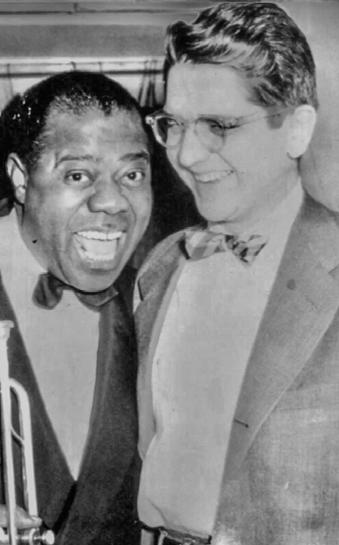
38 APRIL 2022 JERSEY JAZZ NJJS.ORG
DAN’S DEN
PHOTO COURTESY OF THE CHAZEN FAMILY.
OTHER VIEWS
BY JOE LANG
Introducing The Scott Silbert Big Band (self-produced) is led by tenor saxophonist Scott Silbert.
Once a member of the acclaimed The Navy Commanders, he eventually became the chief arranger for the United States Navy Band. Those familiar with the service big bands are aware of the superior musicianship and intense swing present in their performances. Since retiring from the Navy in 2017, Silbert has been active as a player and arranger with the Smithsonian Masterworks Jazz Orchestra as well as leading his own small groups and big band. His first recording with his big band reflects the essential swing that was mentioned above. For his 15-song program, Silbert transcribed some lesser heard tracks by a variety of big band era aggregations and added an original piece, “Tootsie’s Rag,” for this joyous excursion by his 15-piece
band. Among the bands represented are The International Sweethearts of Rhythm, Jimmie Lunceford, Larry Clinton, Duke Ellington, Louis Jordan, Benny Goodman, Harry James, Count Basie, Tommy Dorsey and Erskine Hawkins. If straight-ahead big band swing is your thing, you will love this music. scottsilbertmusic.com
Music from Broadway musicals has been an essential part of the jazz repertoire. For their new album, The DIVA Jazz Orchestra Swings Broadway (DIVA Jazz – 2022), DIVA has chosen selections from nine shows, had them arranged by Steven Feifke, Michael Abene, Scott Whitfield, and Scott Silbert, as well as DIVA members Leigh Pilzer, Sara Jacovino and Noriko Ueda, and plays them with the typical DIVA flair. The tunes are “Heart” (Damn Yankees), “Pure Imagination” (Charlie and the Chocolate
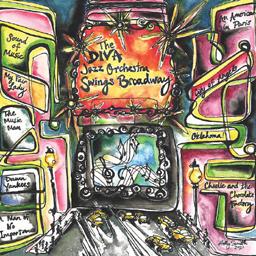
Factory), “The Man I Love” (An American in Paris), “With Every Breath I Take” (City of Angels), “The Sound of Music” (The Sound of Music), “Oh, What a Beautiful Mornin’” (Oklahoma), “Seventy-Six Trombones” (The Music Man), “Love Who You Love” (A Man of No Importance) and “Get Me to the Church on Time” (My Fair Lady). Leader/drummer Sherrie
Maricle gives plenty of solo space
to a broad spectrum of players from her 15-piece orchestra. The results are satisfying for lovers of both show tunes and big bands. divajazz.com
Guitarist Nate Najar’s earliest musical influence was Charlie Byrd. To celebrate the 60th anniversary of the release of the iconic album, Jazz Samba that Byrd recorded with Stan Getz, Najar has recorded Jazz Samba Pra Sempre (Blue Line – 220081). He has assembled a group including himself on guitar, Jeff Rupert on tenor sax, Herman Burney on bass, and Chuck Redd on drums. To add authenticity, Najar is playing Charlie Byrd’s guitar, Burney is playing the bass that Keeter Betts played on the original recording, and Redd reprises his role as the drummer in a later version of Byrd’s trio. They play the same seven tunes from the original album, “Desifinado,” “Samba
39 APRIL 2022 JERSEY JAZZ NJJS.ORG
OTHER VIEWS
Dees Days,” “O Pato,” “Samba Triste,” “Samba de Uma Nota Só,” “É Luxo Só” and “Na Baixa do Sapatiero.” But, they avoid any slavish adherence to the original versions, rather taking the songs to new destinations. Brazilian vocalist Daniela Soleade contributes on “O Pato” and “É Luxo Só.” Najar and crew have produced a loving nod to an album that was instrumental in bringing the wonderful sounds of bossa nova to this country and popularizing them. natenajar.com
Pianist Jean-Michel Pilc presents an imaginative set of improvisations in concert with bassist Rémi-Jean LeBlanc and drummer Jim Doxas on Alive – Live at Dièse Onze, Montrael Justin Time – 275). This trio is one that functions as an integral unit rather than as a pianist with rhythm section. They perform extended versions of five selections, “Softly as in
a Morning Sunrise,” “Nardis,” “All Blues,” and two Pilc originals, “11 Sharp” and “Alive.” Pilc describes in his brief, but to the point, liner notes the emotions that were infusing the musicians and the music. This was their first occasion playing together since the onset of the Covid-19 pandemic, and the recording captures the spontaneity that impelled their impressive performances. For those who
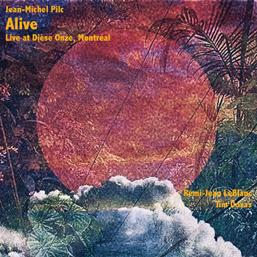
are as taken with the music as I was, you might also obtain Alive – Live at Dièse Onze, Montrael, Set 2, available only as a download. justin-time.com
When you turn three accomplished tenor sax players loose in a studio with an empathetic rhythm section and the results are like those on Tenor Time (AFAR Music), you can be assured that there were six smiling faces emerging from the studio at the conclusion of the session. The three Chicago-based tenor players on this album are Scott Burns, John Wojciechowski and Geof Bradfield. Producer and pianist/keyboardist Richard D. Johnson, founder of the AFAR Music label, wanted to create an atmosphere where the musicians could create an improvisational musical dialog that would produce results capturing, “the freshness and energy of a live performance with
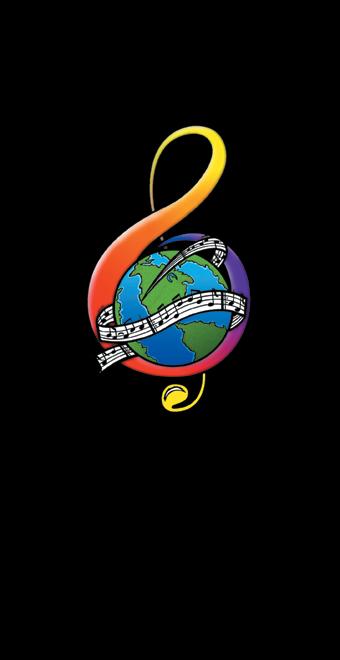
•
CAMPAIGNS
• RADIO MAILINGS
NJJS.ORG 40 APRIL 2022 JERSEY JAZZ
JAZZPROMOSERV ICES.COM WE GET THE WORD OUT J i m E i g o J a z z P r o m o S e r v i c e s 2 7 2 S t a t e R o u t e 9 4 S o u t h # 1 Wa r w i c k , N Y 1 0 9 9 0 O f f i c e : 8 4 5 - 9 8 6 - 1 6 7 7 C e l l / Te x t : 9 1 7 - 7 5 5 - 8 9 6 0 S ky p e : j a z z p r o m o j i m @ j a z z p r o m o s e r v i c e s . c o m S P E C I A L I Z I N G I N M E D I A C A M PA I G N S F O R A RT I S T S , L A B E L S , V E N U E S A N D E V E N T S • NEW RELEASES
IMPORTANT ANNOUNCEMENTS
UPCOMING PERFORMANCES AND
E-MAIL
•
•
TOURS •
MARKETING
PRESS
eigo_jps_4.5x9ad_newjerseyjazzsociety_february2022_Layout 1 1/25/22 5:23 PM Page 1
OTHER VIEWS
the clarity of a studio session.” The three saxophonists and Johnson provided two original tunes each that created a variety of musical contexts for these four, plus bassist Clark Sommers and drummer Greg Artry, to explore. In one day, they recorded the entire album with almost all the selections getting down on one or two takes. What they have produced is an album that is fresh, loaded with spontaneous excitement and energy. afarmusic.com
Be With Me (self-produced) by The Matt Gordy Jazz Tonite Sextet is the first album as a leader for drummer Gordy. The program has 10 selections: “Topsy,” “You and the Night and the Music,” “Soul Eyes,” “My Shining Hour,” Oscar Peterson’s “Wheatland” and “Sunny,” plus four Gordy originals. His group of first-call Los Angeles musicians includes Ron Stout on trumpet and flugelhorn, Ido Me-
shulam on trombones, Jeff Ellwood on sax, Alan Pasqua on piano, Chris Colangelo on bass, and Gordy on drums with Sherry Williams on vocals on “Sunny” and Gordy’s “Be With Me.” Gordy has also written the arrangements for this tasteful straightahead session. jazztonite.com
The vocal albums below all draw their programs from the music of the Broadway theater.
Cole Porter was among the most prolific and popular of Broadway songwriters. Vocalist Kristina Koller takes Porter’s songs on musically eclectic journeys for her new album, Get Out of Town (self-produced). With the support of pianist Fima Chupakhin, bassist James Robbins, and drummer Juan Chiavassa, Koller presents a compact program of eight selections.
Six of the tunes are familiar to most
listeners, “Get Out of Town,” “What Is This Thing Called Love,” “It’s All Right with Me,” “In the Still of the Night,” “Just One of Those Things” and “Ev’ry Time We Say Goodbye.” For the other two songs, Koller had to dig much deeper into the Porter catalog for “Greek to You,” a song from an unproduced musical of the same name, and “Why Don’t We Try Staying Home,” a tune cut from Fifty Million Frenchmen. Koller varies her approach to each selection, and even accompanies herself on ukulele as her sole support on “Ev’ry Time We Say Goodbye.” kristinakoller.net
On his previous albums, vocalist Spencer Day mixed original songs with occasional nods to the Great American Songbook. On Broadway by Day (Club44 Records), he stays strictly with show tunes. Day has walked the line between jazz and pop, and applies both sensitivities
The Sandy Sasso Quartet
The Sandy Sasso Quartet
April 29th 7:30-10:00 AT
March 26th, 7:30-10:00 at……….
The Long Branch Distillery
The Long Branch Distillery
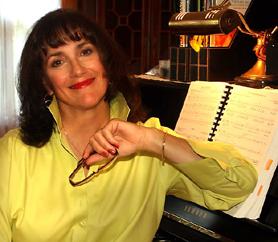
A night of great jazz, superb spirits distilled on the premises (scotch, rum, bourbon, vodka, rye) in a very cool room. Comfy seating, and not too crowded. BYOF, Bring Your Own Food or order in from local restaurants.
A night of great jazz, superb spirits distilled on the premises (scotch, rum, bourbon, vodka, rye) in a very cool room. Comfy seating, and not too crowded. BYOF, Bring Your Own Food or order in from local restaurants.
Make reservations at “Book Now”, lbdistillery.com or call 732- 759-8321
Make reservations at “Book Now”, lbdistillery.com or call 732-759-8321
199 Westwood Ave, Long Branch
199 Westwood Ave, Long Branch
NJJS.ORG 41 APRIL 2022 JERSEY JAZZ
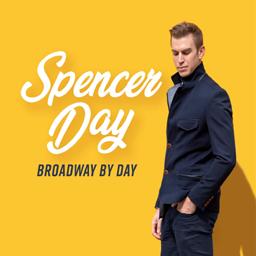
to this album. He bookends the 12song program with selections from A Chorus Line, “One” and “What I Did for Love.” Along the way he includes a few surprising choices like “Bali Hai” from South Pacific, “Maybe” from Annie, “Who Will Buy” from Oliver and “I’d Be Surprisingly Good for You” from Evita, along with “Getting to Know You,” “I Don’t Know How to Love Him,” “It Only Takes
a Moment,” a duet with Jane Monheit, “If I Loved You,” “Losing My Mind” and “On the Street Where You Live.” Day has a deep, smooth baritone and a natural feeling for reading lyrics. Club44Records.com Having spent over two decades acting and performing in musical theater, vocalist Gary Brumburgh eventually turned his attention to jazz, leading him to record his first album Up Jumped Spring with support from outstanding Los Angeles-based musicians. Unfortunately, his career was interrupted for several years by serious health issues. On Full Circle (Café Pacific Records) Brumburgh combines his jazz side with a program of Broadway songs from shows in which he performed during the earlier part of his career. He is accompanied by pianist/arranger Jamieson Trotter, bassist Gabe Davis,
and drummer Christian Euman, with occasional contributions from Larry Koonse on guitar, Danny Janklow on saxes, Scott Whitfield on trombone, Ross Garren on harmonica, and Léo Costa on percussion. The shows represented are City of Angels (“Ev’rybody’s Gotta Be Somewhere”), Celebration (“Celebration” and “I’m Glad to See You’ve Got What You Want”), Cabaret (“Why Should I Wake Up”), Oklahoma (The Surrey with the Fringe on Top”), South Pacific (“Happy Talk” and “You’ve Got to Be Carefully Taught”) The Fantasticks (“Soon It’s Gonna Rain”), Company (“Sorry-Grateful”), A Funny Thing Happened on the Way to the Forum (“Love, I Hear”) and Fiddler on the Roof (“Far From the Home I Love”). Brumburgh finds a perfect balance between his jazz and Broadway sides to give us an album that is consistently pleasing. garybrumburgh.com
north Jersey's neighborhood spots for open jams
couLd use your support!
They provide h gh levels of music anship and a platform for younger mus cians to share a stage with the r elders

RIVERVIEW JAZZ
Bringing jazz to Jersey City riverview jazz.org
MOORE'S LOUNGE
189 Mont cello Ave
Jersey City
Fri & Sun open jams no cover
Winard Harper, host Park north of venue on Monticello


Tavern On George 361 George Street
New Brunswick
Thurs 7 - 10 pm /$15 cover
Tues 7 - 10 p.m. no cover
Emerging Artists/open jam New Brunswick Jazz Project


DLV LOUNGE
300 Bloomfield Ave
Montclair
Thurs & Friday, 9-12 no cover
Richard Pierson, host

BRIGHTSIDE TAVERN
Br ght & Monmouth
Mon 8pm - open jam no cover
Noel Sagerman host park just south of venue on Monmouth


CLEMENT'S PLACE
15 Washington St
Rutgers Newark
WED & FRI no cover but RSVP: Jazz973/Facebook
Inst tuteJazz Studies & Gregory Burrus Productions hosts

Norman Mann hosts
Friday jazz @ 7:30 pm $10 cover/free parking 16th Ave&EasternPkwy
More info: J Pansulla / JazzEducation@njjs org
NJJS.ORG 42 MARCH 2022 JERSEY JAZZ
OTHER VIEWS
BIG BAND IN THE SKY
Ron Miles
‘Impeccable Cornetist, Tireless Educator’
Cornetist Ron Miles’ last album was his first for Blue Note Records, Rainbow Sign. It was released in 2020, featuring guitarist Bill Frisell, pianist Jason Moran, bassist Thomas Morgan, and drummer Brian Blade. DownBeat’s J.D. Considine called it “by far, Miles’ most important work as a bandleader.” AllAboutJazz’s Paul Rauch described it as a “career defining effort.”
Miles passed away on March 8, 2022, in Denver at the age of 58. Cause of death was complications from a rare blood disorder called Polycythemia Vera. “Ron was such a gifted artist,” said Blue Note President Don Was. “He was a sweet, soulful man whose character was reflect-

ed in every exquisite note he played. We are heartbroken to lose him so soon, but he will live forever through the music he’s left behind for us.”
On Facebook, Moran called Miles an “impeccable cornetist, tireless educator, consummate Prince fan, and thoughtful bandleader. Over
the past 15 years, we made a lot of tender sounds together. Each time I’d ask him, ‘How do you write music like this?’ He’d shrug and hand me another enormous score.”
Born on May 9, 1963, in Indianapolis, Miles moved to Denver with his family when he was 11 years old.
He studied music at the University of Denver and the Manhattan School of Music, releasing his first album, Distance for Safety on the Prolific label in 1987. He received a Grammy nomination for his performance on tenor saxophonist Joshua Redman’s 2018 Nonesuch album, Still Dreaming. In a review of the album, the London Jazz News’ Chris Parker described Miles’ contributions as “wistful but sure-footed, by turns questioning, even eccentric, yet always wholly appropriate.” Miles was Jazz Studies Coordinator at Denver’s Metropolitan State University. He was also inducted into the Colorado Music Hall of Fame.
Survivors include: his wife, Kari Miles; daughter, Justice Miles; son, Honor Miles; mother, Jane Miles; brother, Johnathan Miles; sisters, Shari Miles-Cohen and Kelly West; and half-sister, Vicki M. Brown.
43 APRIL 2022 JERSEY JAZZ NJJS.ORG
PHOTO BY ELLIOT ROSS
BIG BAND IN THE SKY
Fred McIntosh III Jazz Scholar
Frederick F. McIntosh III, who passed away March 10, 2022, at the age of 94 in Old Tappan, NJ, was a jazz scholar, who, according to the Record/Herald News, “shared his love of music with many friends and family over the years, hosting jazz

picnics at his home, hiring some of the greatest bands and performers in the New York City metropolitan area.”
He was also an active member of the Jazz Record Masters of North Jersey and hosted club meetings at his home.
Born in Parkersburg, WV on November 16, 1927, McIntosh grew up in Spencer, WV, attended the Greenbriar Military Academy, earned an undergraduate degree from West Virginia University and a law degree from Harvard University. He served as Counsel for a division of ITT in Nutley, NJ, and was President of McIntosh Oil & Gas Company in Spencer.
He is survived by his wife, Lynn; children, John, Marcia, Anne, Jim, Stephen, and Andrew; and five grandchildren. The Record/Herald News reported that, he “passed away listening to Billie Holiday, one of his favorite jazz performers.” His family is planning a celebration of his life at a summer jazz picnic.

Stokes Forest Music Camp
For music students ages 10-17
July 10 thru 16, 2022
A weeklong sleep-over for vocal and instrumental performance, the perfect summer music and nature camp with fun activities for every student!

The camp was founded in 1992 and is returning after a 2-year hiatus. More info is at montclair.edu/stokes
Replay of our Zoom info meeting is also available.
44 APRIL 2022 JERSEY JAZZ
THANK YOU and welcome to all who have recently joined or renewed their memberships. We can’t do what we do without you!
Your membership is vital to NJJS’s mission to promote and preserve America’s great art form— JAZZ!
NOT WITHOUT YOU!
NJJS org
RENEWED MEMBERS
George Bassett
EWING, NJ
Susan & Ronald Schneiderman
BRIDGEWATER, NJ
Ann Bergquist
MORRIS PLAINS, NJ
Donald Shaw
FORKED RIVER, NJ
Anthony DeCicco
LINCROFT, NJ
NEW MEMBERS
Edythe Hittcon
ISELIN, NJ
Glenn Fogerty CLARK, NJ
Ed Holzwarth
SPRINGVILLE, PA
Ed Maguire MILLBURN, NJ
Dan Kassell
NEW YORK, NY
Timothy Miller
MAHWAH, NJ
New Brunswick
Jazz Project
NEW BRUNSWICK
Thomas Reeder RARITAN, NJ
 JAZZ
JAZZ


































































